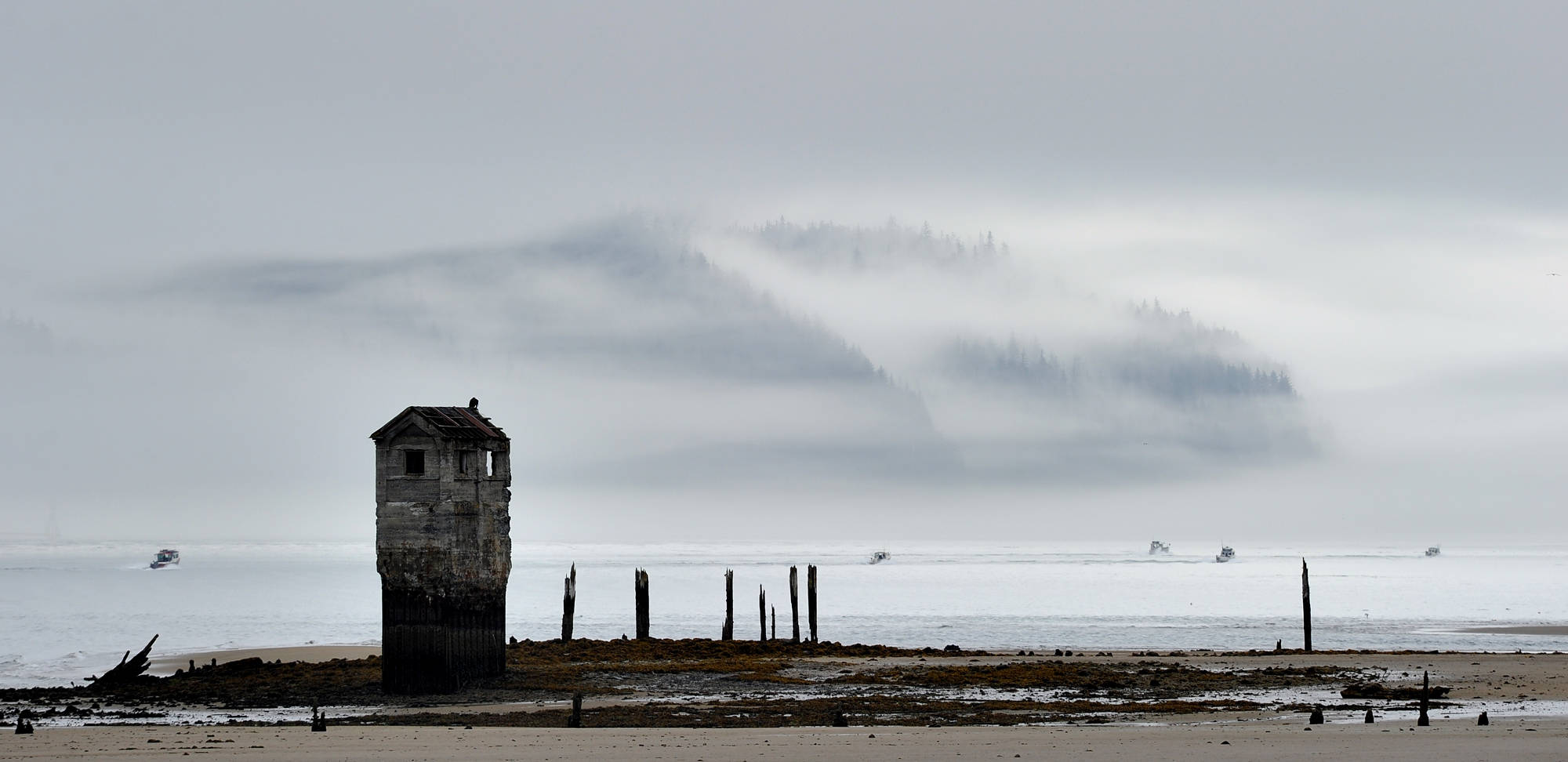Though it sounds like the subtitle to a Pirates of the Caribbean movie, ghost fishing is a real phenomenon. It’s going on right now in Gastineau Channel.
Ghost fishing occurs when old fishing gear, though lost to Davy Jones’ locker, continues to catch crab, salmon, ground fish and sometimes marine mammals years after finding its way to the seabed.
For the past month, the Douglas Indian Association has attempted to curb this unintended harvest. In work finished Monday, DIA has located 209 crab pots in Gastineau Channel. They were able recover about 35 of them using custom-made gear.
“Ghost fishing is basically when lost gear continues to catch and kill both target species and non-target species until it either disintegrates or is lost — with gillnets, sometimes for decades,” said Kyle Antonelis, a consultant who worked with DIA to conduct the crab pot removal project.
DIA and Natural Resources Consultants Inc. used sonar and GPS to map the bottom of the seabed on a 40-mile, zig-zagging path on the west side of Gastineau Channel, near Sandy Beach. In addition to the crab pots, the project mapped the location of four small boats and five tires. They also found human remains, which were the subject of a Tuesday Juneau Empire news article.
Crab pots are designed to lure their catch using bait. Once inside the pot, crab are prevented from exiting using a variety of trap designs.
If a pot isn’t checked regularly, the crab inside will die. This usually happens within 50 days, Antonelis said. But sometimes, a cycle of “self-baiting” can keep a captive crab alive for 300 days, cannibalizing other trapped crab.
“Dungeness crab, when they get into a pot, they can stay in there for quite a while. Eventually they will cannibalize and kill and eat each other. Once one dies and starts rotting, it invites others to come in,” Antonelis explained.
Crab pots can ghost fish anywhere from a couple of months to up to seven years, Antonelis said. Other types of fishing gear can ghost fish for longer.
Because of their ability to ensnare all kinds of marine life, gillnets — mesh nets used primarily by commercial fishermen in Southeast — are known to be particularly troublesome ghost fishers, Antonelis added. Gillnets are made from synthetic material similar to fishing line and can sit on the bottom for decades.
Commercial fishermen use gillnets on the Taku River and Taku Sound, just southeast of Douglas Island.
Butch Laiti, the Tribal Council President of DIA, operates the gillnet fishing boat the Silver Lining in the Taku River area. He said DIA plans to eventually tackle clean up of lost gillnets in the Taku River and Taku Sound area.
The crab pot removal program was a test pilot of sorts, Laiti said, which will help DIA demonstrate their debris removal ability when pitching more wide-reaching removal projects in the future.
In work he’s done on Puget Sound’s dungeness crab fishery, Antonelis has found that ghost fishing is not only wasteful, but costly. According to Natural Resource Consultants Inc.’s Joan Drinkwin, around 12,000 crab pots are lost on Puget Sound, Washington every year.
Those 12,000 pots are estimated to pull in $1 million of crab at ex-vessel value. If extracted, instead of sitting at the bottom cannibalizing one another, those lost Puget Sound crab would be worth an estimated $1 million to fishermen, Natural Resource Consultant Inc.’s research has shown.
Antonelis said it’s hard to compare the cost of ghost fishing in the Gastineau Channel to that of Puget Sound. The density of crab pots they identified in the area wasn’t high, but it wasn’t low in terms of what Antonelis has seen in his 10 years doing this work around the country.
“Often it’s hard to find any empirical information on lost gear,” Antonelis said. “In Puget Sound, we usually look near fishing grounds because it’s a big enough area. The density we found here, 45 pots per square kilometer, was much higher,” than what has been found in other bays in Southeast Alaska.
The human remains DIA found — a lower leg, boot still attached — are currently being examined by the State Medical Examiner’s office.
The identity of the boot owner is not yet known, though DNA identification could be possible, Juneau Police Department Lt. David Campbell told the Empire on Monday.
The boot was punctured by DIA’s custom-built hook system in the last hour of the last day of their crab pot removal project, DIA’s John Morris said. It was a “one in a million” chance, that they made contact with the boot, Lindoff said.
Kamal Lindoff, the DIA project manager who pulled the leg up, described the boot and leg at a Thursday DIA meeting.
The bone was black, and flesh still remained in the boot, Lindoff said. Law enforcement instructed DIA to stop dragging for pots in the area.
DIA was dragging close to shore, not more than a few hundred yards in front of Lucky Me, a small community on south Douglas Island accessible by boat, Lindoff said.
• Contact reporter Kevin Gullufsen at 523-2228 or kevin.gullufsen@juneauempire.com.

